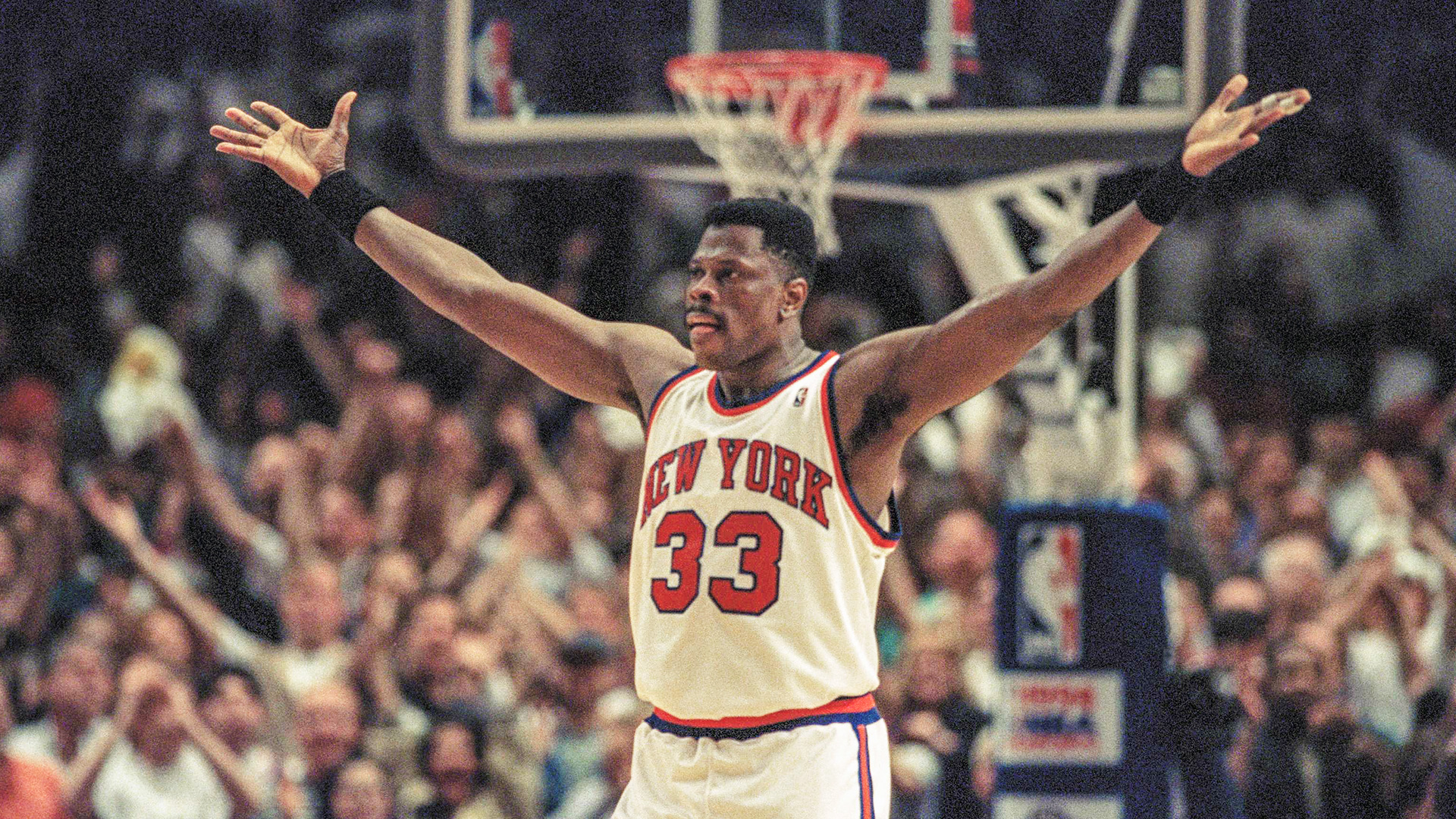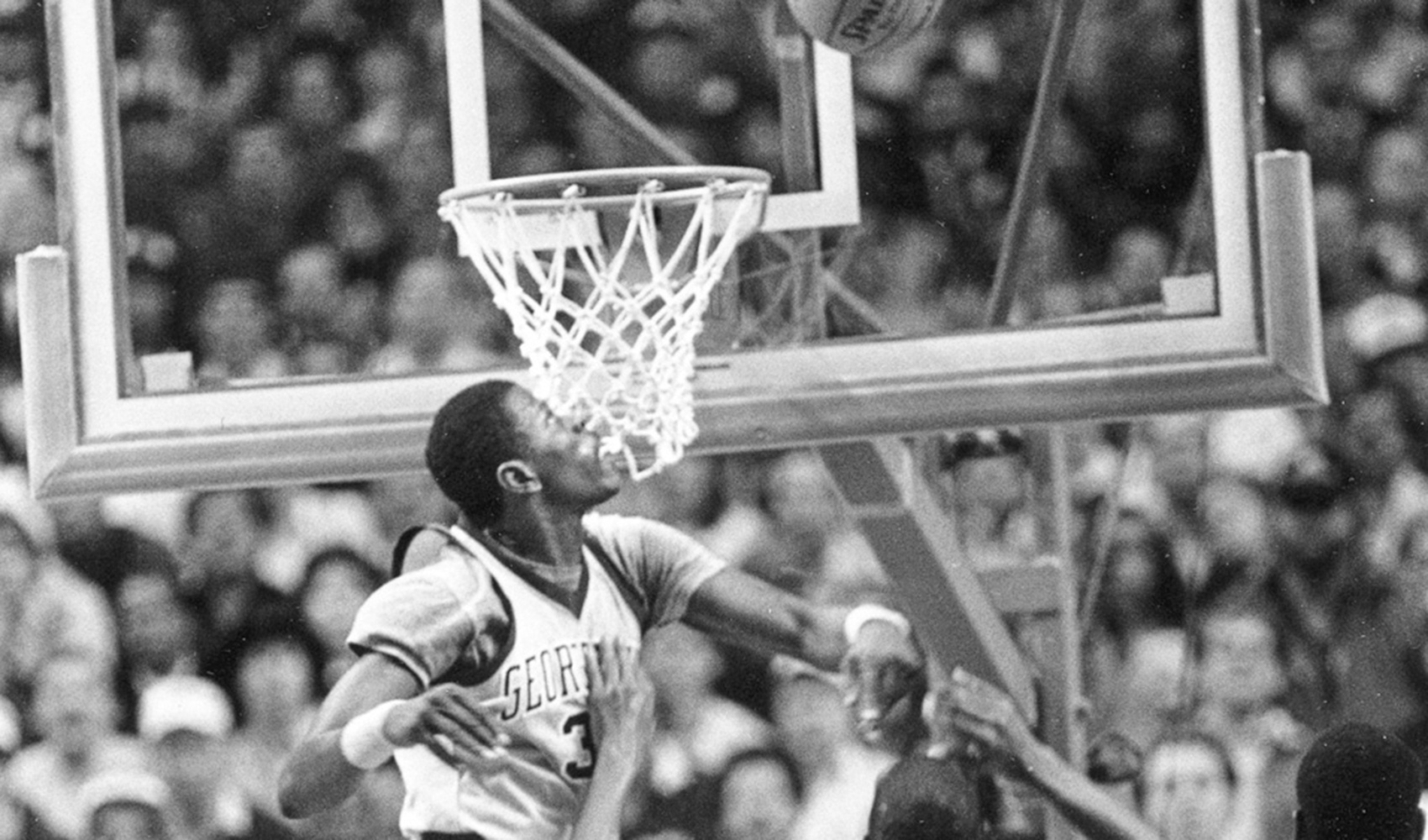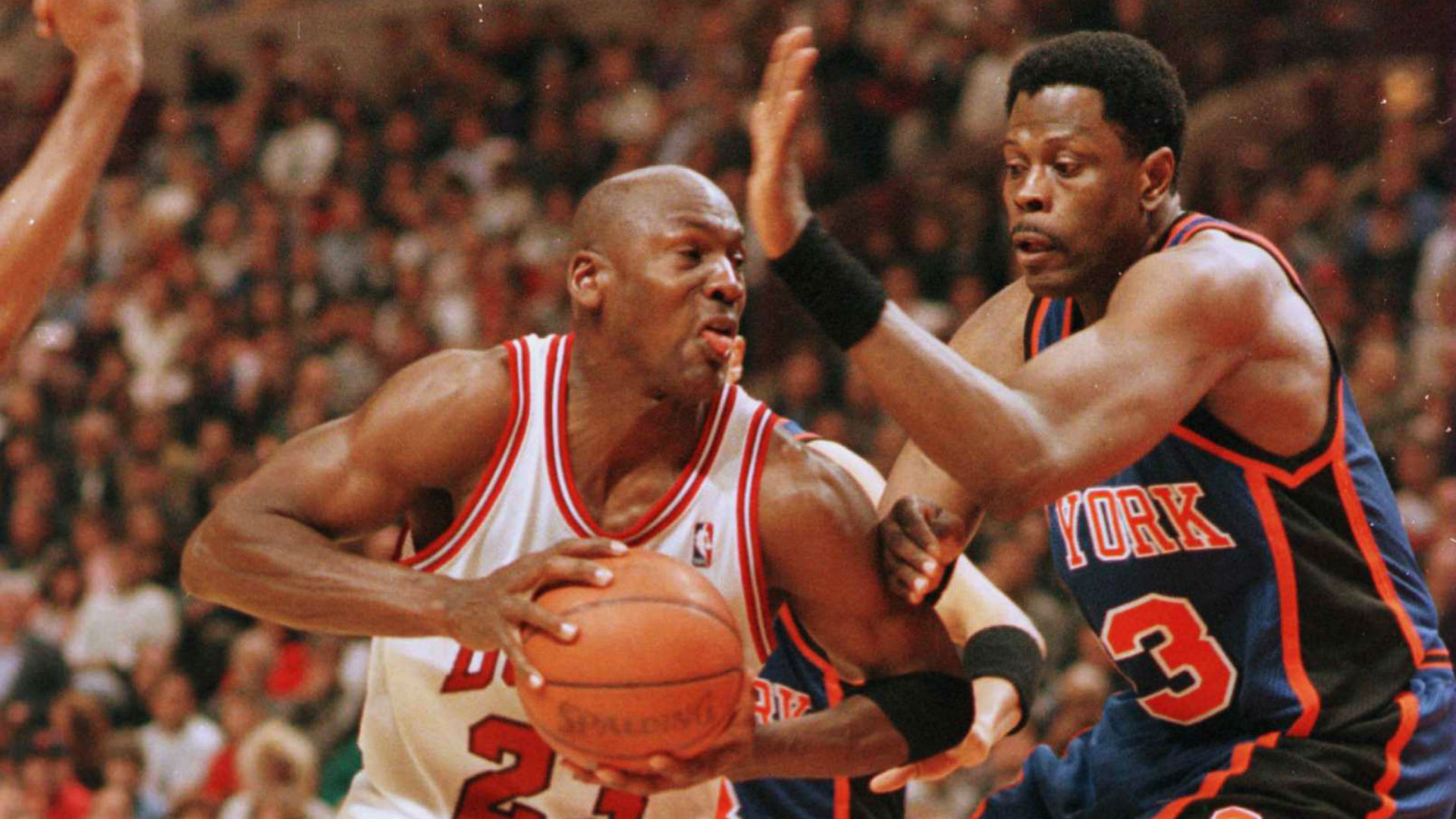The NBA celebrates NBA 75 roster players almost daily from now until the end of the season. Today’s honoree is Knicks star Patrick Ewing. This story about Ewing originally appeared in the January 15, 1990 issue of The Sporting News.
NEW YORK – Last summer, while Patrick Ewing was doing an offseason workout, his coach told him that if he added some muscle, he would become the best player in the National Basketball Association.
Ewing’s 5-year-old son Patrick Jr. was playing nearby and overheard the comment. He said. “My dad is already the best player.” Who could argue?
If the last two seasons were a coming-out party for the New York Knicks’ 7-foot center, then the 1989-90 season should be his crowning glory. Ewing, 27, is having a season fresh from fantasy land. At the last look, Ewing averaged 27.9 points, 10.1 rebounds and 3.6 blocked shots per game while sinking 53.9 percent of his shots from the field and 81.1 percent from the free throw line.
“I think I’m having a great year,” Ewing admitted, showing as much exuberance as allowed. “But it’s not my style to talk about it too much. I always thought I was a very good player and that I was playing up to my potential. This year, my score has increased because I have received more shots. My teammates are giving me the ball. If they get me, I’ll dial with it. “
Lithuanian émigré Sarunas Marciulionis, a former member of the Soviet national team who is a rookie with the Golden State Warriors this season, marveled at his first look at Ewing. “I’ve never seen anything like it,” he said. “One machine. Just one machine.”
Marciulionis had just watched Ewing score 44 points and grab 24 rebounds to lead the Knicks to a 129-111 victory over the Warriors at Oakland Coliseum Arena on November 29. At the time, Ewing was in the middle of a four-game western swing. during which he averaged 35 points and 12 rebounds while shooting 65 percent from the field.
“Impressive,” said Philadelphia 76ers center Mike Gminski after Ewing scored 32 points to lead the Knicks to beat the Sixers, 114-103, on Dec. 5 at Madison Square Garden. “They’re finally using the guy. The guy is getting the ball 35 times a night. When you go to the Garden, you know he’s waiting for you.”
“His early years in the league, maybe he wasn’t ready for that. Now that he’s fully involved in offense, other parts of his game are improving. I don’t know if there’s a center who has a better year than he is.”
Gminski’s accolades may carry more weight than other accolades because he has been more successful against Ewing than most other centers in the NBA. When you say that Ewing has become The Force, believe it. It was Gminski who kept Ewing on 45 percent shooting accuracy and a 17-point scoring average in three postseason games last season. Because the Knicks won all three, people forgot how Ewing fought.
Ewing was named NBA Player of the Month in November when he managed to put the Knicks on the road to a second straight Atlantic Division title. But Ewing wants more than that. He wants the Knicks to go beyond the second round of the playoffs and hopes to be named the most valuable player in the NBA.
“I’m greedy,” Ewing said, flashing a captivating smile, which is easy these days, in contrast to the grim image he had when he was under the microscope at Georgetown University. “I want both, but I can’t win the MVP if we don’t win a lot of games. I want to win the championship.”
Ewing swears he’s not trying harder than in any of his first four NBA seasons. He believes that there is a circular logic at work when critics praise or curse something.
Now that the Knicks are winning, that line of reasoning is that Ewing is playing better, and because he’s playing better, the Knicks are winning. Therefore, the opposite must have happened when he and the Knicks were fighting. He had entered the NBA from a college program that seemed to feed off his image as a basketball bully.
In Georgetown, he frowned and rarely spoke to the press. He could exist behind a wall of security and mistrust established by coach John Thompson. But what many observers viewed as negative, Ewing contends was positive.
“I don’t think it was protected,” he said. “They gave me the opportunity to grow as a person and get a degree without living in a circus.”
Once he knew what he could do with basketball, he took it to greater heights than anyone could have imagined. Still, his rise to professional prominence has not been without pain.
For years, he read about a Patrick Ewing he didn’t know, an angry one, an ignorant one, a non-communicative one, an underperforming one.
“People saw me in a way,” Ewing said. “Now some of those same people say that I’ve changed. But I’m the same as ever. It’s just that some people stopped perceiving me the way they did in college. People see you on the basketball court and assume that’s the the way you are in person. That’s not the case. On the court, I am one way. Off the court, I am totally different: relaxed, calm. “
Or, as his friend and teammate Kenny Walker puts it, “He’s a big teddy bear.”
If so, that teddy bear felt like grunting during his first NBA seasons. Although he won Rookie of the Year honors in the 1985-86 season, he was widely criticized for missing 32 games due to injuries. A reluctant knee, which ultimately required surgery, cost him 19 games during his second season.
When he couldn’t show his dominance, the press and Hubie Brown, the Knicks coach at the time, roundly criticized him. Brown was convinced he needed to implement a Twin Towers approach with the Knicks, and decided that Ewing should play forward with Bill Cartwright in center.
When Ewing expressed dissatisfaction with the arrangement, and as the Knicks stumbled through the early part of the 1986-87 season, Brown was furious. Once, he went on to say, “Patrick is embarrassed by his game.”
Ewing wasn’t ashamed of himself, but Brown’s comments hurt. As a result, he retired from the coach.
A Knicks teammate said that season: “The only reason he’s a starter is because they pay him $ 3 million a year.”
Brown was fired when the Knicks finished 24-58, tied for last in the Atlantic Division. But he fired a goodbye shot, saying, “The guy who’s not doing his job is Ewing.”
A current Western Conference coach, who demanded anonymity, said: “The word in the league back then was that people were questioning their hearts.”
Criticism of Ewing flowed as freely then as praise now. “You can’t let what people say bother you,” Ewing said. “I think now I’m the same as always.”
Not really. In the first place, instead of hearing that he was the cause of the Knicks’ horrible records, a 23-59 mark in his rookie season and a 24-58 record the following year, he is told daily that he is the motive of the Knicks. resurgence, which started at a 52-30 mark last season.
He doesn’t look the same either. The most obvious change is the smile, which he rarely showed in his first two seasons as a professional. Now, he’s just as much a part of Ewing as his near-unstoppable jump shot. Then, too, he has become more muscular, through adherence to off-season conditioning programs.
“I am physically stronger,” he said, “and I am five years older, five years more mature. People improve with age, they become wiser, more intelligent. I am more serene, in control.”
Ewing has been compared to some of the game’s legends, of course.
Perhaps Wilt Chamberlain, the model of the multi-faceted center, is the only player who can be retained until the current Ewing.
Magic Johnson of the Los Angeles Lakers said last year: “To be honest, I didn’t think Patrick Ewing was as good as expected.”
Now, says Johnson, “Patrick has pushed his game to the max. I don’t know what flipped the switch, but I know it’s going to be very difficult to turn it off.”
Ewing emphasizes that it has not happened by accident. Always confident, his sales assurance grew heightened last season, when, playing a career-high 36.2 minute average and appearing in all but two of the Knicks games, he had career-highs in scoring (22.7), rebounding. (9.3), field goal percentage (.567), free throw percentage (.746), assists (188) and blocked shots (281).
“I think they gave me the talent to do what I’ve done,” Ewing said, “but there are a lot of people with the same talent and ability who don’t. You have to work and perfect.” I am very proud of what I have done, I have done a lot.
“I think there is still a lot to do.”
If there’s one nuance in Ewing’s game that has made him an MVP possibility this season, it’s his ability to pass.
“That’s the key to Patrick,” said Stu Jackson, the Knicks’ first-year head coach. “If it is a passing threat, it cannot be protected.”
Of course, protecting Ewing is just a problem for his opponents. Being guarded by him is another matter.
“You can see how vital Patrick is when you watch the reaction of other players when he’s out of the game,” Jackson said. “They will get to the lane, they will drive to the basket. People’s eyes light up because the intimidation factor is not there.
“When he’s there, they don’t even think about it. They come around the court and they start looking around, questioning themselves.”
Said Knicks guard Trent Tucker, “He’s our security blanket.”
That’s true on both ends of the court. If Ewing continues to produce at his current levels, he will set team records for points and blocked shots.
“Maturity and experience are the best teachers for a talented young player,” Lakers general manager Jerry West said. “He has become a dominant player.”
Patrick Ewing Jr. has known this for some time.



